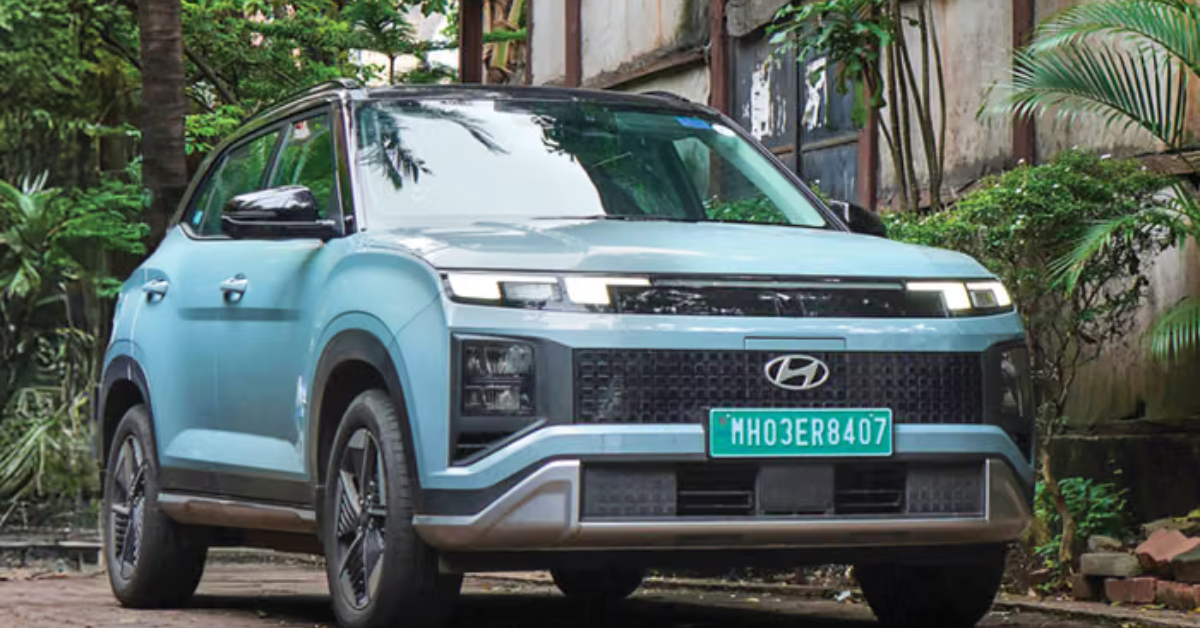The Hyundai Creta has been a benchmark in the Indian SUV segment for years, thanks to its perfect balance of style, features, and reliability. Now, with the global shift toward electrification, Hyundai has introduced the Creta Electric, combining the trusted Creta platform with sustainable EV technology. While initial impressions highlighted futuristic styling and a host of connected features, it’s the long-term ownership experience that reveals the true strengths and weaknesses of an electric SUV.
We drove the Hyundai Creta Electric for 2,500km across mixed terrains – from city commutes to highways and even semi-urban stretches – to bring you this comprehensive long-term review.
Design and Build Quality
The Creta Electric retains the signature SUV stance of its ICE counterpart but introduces subtle EV-specific design changes.
- Closed front grille with aerodynamic elements.
- Distinct LED DRLs and futuristic lighting setup.
- EV-specific alloy wheels optimized for airflow.
- A more premium finish with subtle “electric” badging.
The build quality feels solid, with doors closing with a reassuring thud. Fit and finish levels are high, and the paint quality maintains Hyundai’s global standards.
Cabin and Comfort
Step inside the Creta Electric, and the cabin immediately feels modern yet familiar.
- A digital instrument cluster with EV-specific data like battery percentage, range estimate, and regenerative braking levels.
- Dual-screen setup (depending on variant) with infotainment and driver information neatly integrated.
- Plush seats with ventilated front options, maintaining comfort on long drives.
- Excellent cabin insulation, thanks to reduced engine noise, with only road and wind noise filtering in at higher speeds.
Rear seat comfort continues to impress with ample legroom, a wide bench for three adults, and dedicated AC vents.
Performance and Driving Dynamics
The Creta Electric uses a permanent magnet synchronous motor, tuned for both efficiency and usable performance.
- Instant torque delivery ensures brisk acceleration in city conditions.
- 0-100 km/h in around 8-9 seconds (depending on variant).
- Three driving modes – Eco, Normal, and Sport – allow flexibility based on driving style and battery conservation.
- Regenerative braking has multiple levels, allowing one-pedal driving in dense traffic.
On highways, the Creta Electric feels stable, with confident straight-line behavior and well-weighted steering. Cornering dynamics are decent for an SUV of this size, though the extra weight of the battery pack is noticeable during quick directional changes.
Real-World Range and Efficiency
One of the biggest concerns for EV buyers is range, and after 2,500km of mixed driving, here’s what we observed:
- City driving: 380–420 km per charge, thanks to effective regeneration.
- Highway driving: 320–350 km, depending on speed and load.
- Overall average range: Around 370 km on a full charge.
Hyundai’s battery management system ensures predictable performance, and the range estimator is fairly accurate, reducing anxiety during long trips.
Charging Experience
The Creta Electric supports both AC and DC fast charging.
- AC home charging (7.2kW): Takes around 7–8 hours for a full charge.
- DC fast charging (50–100kW): Charges from 10% to 80% in just 45–50 minutes.
During our long-term test, finding a fast charger was rarely an issue in metro cities, though semi-urban regions still pose challenges. Hyundai’s tie-ups with multiple charging networks add convenience.
Ride and Handling
The suspension is tuned for comfort, with a bias toward city driving. Speed breakers and potholes are handled gracefully, and ride quality feels plush. On highways, the Creta Electric remains planted, even with a full load. The extra weight of the battery lowers the center of gravity, giving it a more stable feel than the ICE Creta.
Features and Technology
The Creta Electric continues Hyundai’s tradition of offering a feature-rich SUV.
- ADAS Level 2 features (lane keep assist, adaptive cruise control, blind-spot monitoring).
- Connected car tech with remote monitoring of charge status and range.
- Premium Bose sound system.
- Wireless Apple CarPlay and Android Auto.
- 360-degree camera and parking sensors for easier maneuverability.
Ownership and Maintenance
One of the biggest advantages of an EV is lower running cost. After 2,500km, the average cost per km was significantly lower than petrol or diesel SUVs.
- Charging at home cost roughly ₹1.2–₹1.5 per km.
- Minimal maintenance due to fewer moving parts – no oil changes, fewer wear items.
- Hyundai offers an 8-year/160,000 km warranty on the battery, ensuring peace of mind.
Pros and Cons
Pros:
- Impressive real-world range (up to 420 km in city).
- Futuristic design and premium cabin.
- Smooth, silent, and powerful drive.
- Advanced features including ADAS.
- Lower running and maintenance cost.
Cons:
- Charging infrastructure still inconsistent outside metros.
- Higher upfront cost compared to ICE Creta.
- Slightly reduced boot space due to battery packaging.
Verdict: Should You Buy the Hyundai Creta Electric?
After 2,500km of extensive driving, the Hyundai Creta Electric proves to be a practical and premium EV SUV. It blends the reliability and comfort of the Creta brand with the advantages of electric mobility – instant torque, silent cabin, low running costs, and eco-friendly performance.
For urban buyers and those with access to reliable charging networks, the Creta Electric makes an excellent case as a family EV SUV. It’s not just a green alternative but a capable daily driver that doesn’t compromise on comfort or features.
